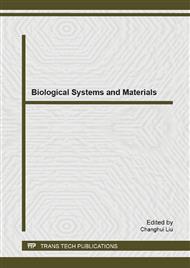[1]
X. Liu, L. Zhang, Y. Li, et al: Energy-saving slag thermal insulator, China patent, 201010225763. (2010).
Google Scholar
[2]
N. Maruoka, T. Mizuochi, H. Purwanto: Feasibility study for recovering waste heat in the steelmaking industry using a chemical recuperator, ISIJ International, Vol. 44 (2), (2004), pp.257-262.
DOI: 10.2355/isijinternational.44.257
Google Scholar
[3]
G. Bisio: Energy recovery from molten slag and exploitation of recovered energy, Energy, Vol. 22, (1997), pp.400-550.
DOI: 10.1016/s0360-5442(96)00149-1
Google Scholar
[4]
K. Nagata, H. Ohara and Y. Nakagome: The heat transfer performance of a gas-solid sontactor with regularly arranged baffle plates, Powder Technol., Vol. 99, (1998), pp.302-307.
DOI: 10.1016/s0032-5910(98)00127-2
Google Scholar
[5]
H. Wang, C. Zhang, Y. Qi, et al: Present situation and development trend of blast furnace slag treatment, Iron and Steel, Vol. 42 (6), (2007), pp.83-87.
Google Scholar
[6]
H. Shen: An overview of recovery of metals from slags, Waste Management, Vol. 23, (2003), pp.933-949.
DOI: 10.1016/s0956-053x(02)00164-2
Google Scholar
[7]
R. Slot, A. Jchn: The fabrication of glass-ceramic materials based on blast furnace slag-a review, Journal of the Canadian Ceramic Society, Vol. 45, (1976), pp.63-67.
Google Scholar
[8]
A. Marabini, P. Plescia, D. Maccari, et al: New materials from industrial and wastes: glass–ceramics and glass- and rock-wool Fiber, Int J Miner Process, Vol. 53, (1998), pp.121-134.
DOI: 10.1016/s0301-7516(97)00062-8
Google Scholar
[9]
T. Niehoff: Method for producing mineral wool, United States patent: 2009314035A1, (2009).
Google Scholar
[10]
I. Charge: Method and Apparatus for high throughput generation of fibers by charge injection, United States patent, 20010785088, (2001).
Google Scholar
[11]
K. Otaki: Method and apparatus for producing glass fiber, United States patent, 2009314036A1, (2009).
Google Scholar
[12]
S. Patankar: Numerical heat transfer and fluid flow, McGraw Hill Book Company, pp.10-11, (1980).
Google Scholar
[13]
J. Lee, C. Chen: Numerical Simulation of line puff via RNG k-ε model, Communication of Nonlinear Science and Numerical Simulation, Vol. 16 (4), (1996), pp.15-19.
DOI: 10.1016/s1007-5704(96)90045-3
Google Scholar


